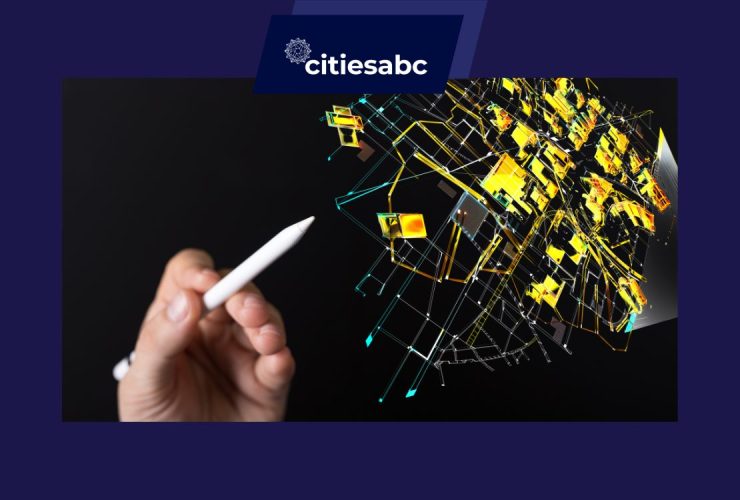Tech For Good And Five Technological Innovations For Sustainability

Categories :
Global challenges like climate change, economic insecurity, deteriorating health, and many others need holistic and tech solutions. Technology For Good (or Tech4Good) is a much broader and inclusive approach that applies exponential technologies capable of addressing critical challenges in the most sustainable way. Is, then, Tech For Good the answer to making the world a better place?
Technology has transformed the world, evolving society itself with advancements like printing, navigation, medicine, aviation, wireless, and the internet. But, with time, it became clear that it wasn't always that these had a net positive impact, and that we need to start developing a world focused on the greater good of society.
Technology For Good (or Tech4Good) is a much broader and inclusive approach that applies exponential technologies capable of addressing critical challenges in the most sustainable way.
Tech For Good: A deeper sustainable perspective
Technology For Good is a comprehensive perspective that allows one to take a step back from techno-solutionism and hyped fads, and understand the dynamics that exist within the various elements of an ecosystem- people, culture, economics, history, and information.
Crucially, integrating all this information and developing a technology that impacts everyone in a positive manner is Tech4Good.
Sustainability with Tech For Good
Sustainable development, according to the UN World Commission on Environment and Development is “development that meets the needs of the present without compromising the ability of future generations to meet their own needs.”
Sustainability can only be achieved by keeping the people (or the living beings) at the core of any development, and this very concept is the integral theme of the Tech4Good approach. Therefore, the fabric of sustainable innovation can be created only if it serves the dual purpose - the positive impact on humanity and taking the global challenges head-on.
Below are the top innovations for promoting better and sustainable living:
Green Cloud Computing Approaches and practices where computing and IT innovations have potential environmental benefits are grouped under green cloud computing.
Green Cloud computing is very efficient for users as it ensures no data loss. It enables a reduction in carbon emissions by 88% and energy consumption by 87%, while also providing ease of working for its users and increasing the efficiency of the process.
Edge Computing Edge computing is a distributed computing paradigm - an architecture that stores data locally in the nearby device on the site of its creation. This is expected to improve response times, reduce data traffic, save bandwidth, reduce energy usage, and consequently carbon emissions.
Edge computing allows retrofitting, i.e. adding new technology to pre-existing infrastructure, reducing the e-waste generated due to replacement.
IoT Sensors IoT (or Internet of Things) sensors are the hardware pieces to detect changes in the environment and collect data. These sensors are a part of an IoT ecosystem that bridge the physical world to the digital one.
IoT sensors may detect changes in temperature, pressure, PM, Co2 levels, motion etc. They share this data with the network they are connected to. This information is crucial for detecting and solving environmental problems.
IoT sensors can also be used in infrastructures to track, analyse, and optimise energy consumption. For instance, IBM has developed a low-cost IoT sensor to detect methane leaks, a global warming contributor and hazardous gas.
Artificial Intelligence
Considered one of the most revolutionary human developments, AI has immense transformative capabilities, empowering the world with some cutting-edge solutions.
From developing new drugs to tracking the human trafficking rackets, optimising energy generation and consumption, and helping people with disabilities- AI is currently bringing radical innovations to the mainstream- making our lives more sustainable than ever imagined.
It can be utilised in many ways to reduce its carbon footprint by managing and tracking its impacts on the environment. Google used DeepMind to reduce the energy consumption of its data centres, and its cooling cost by 40%. AI can be used to create green and clean energy grids, for eco-friendly agriculture, to enhance the sustainability of supply chains, and for monitoring the environment.
Blockchain
The decentralised, immutable, and transparent nature of blockchain technology is the key to harnessing innumerable applications for good. Constant innovations and humanitarian efforts with a positive environmental impact have been the salient features of blockchain that encourage newer and better models from authorised participation. Above that, it also facilitates tracking and monitoring of parameters, while ensuring informed decision-making.
The Tech For Good approach
Placing technology in the context of society, people, and culture is not as simple as downloading an app, or demonstrating a new cookstove, or building a website- those “simple” problems have already been solved.
Tech4Good challenges, on the other hand, are more complex. They are the ones that allow the world to tweak both the available tools and the understanding of their applications; to consider historical activities alongside cultural considerations for the usage of technology; to consider that solving any one particular part of a problem is a gateway to newer unanticipated problems.
The Tech4Good lens is a motivation to look beyond the small scope of the technology itself, and place it within an appropriate context.
Citiesabc was created by a team of global industry leaders, academics and experts to create new solutions, resources, rankings and connections for the world’s top cities and populations.










